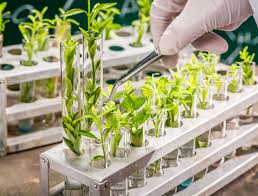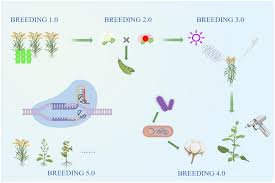Recurrent selection involves cycles of selection and recombination of selected individuals to form a new population in each cycle, from which selection can again be initiated.
This method is used for improving populations by increasing the frequency of superior genotypes or genes in the gene pool. It is especially suitable for enhancing quantitative traits in crops.
Read Also: General Principles of Goat Production
Types of Recurrent Selection

There are four main types of recurrent selection:
1. Phenotypic or Simple Recurrent Selection
In phenotypic recurrent selection, a number of plants with desirable phenotypes are selected and self-pollinated. The progenies from the selected plants are grown separately the following year, and intercrosses may be aided by hand.
This method is more suitable for cross-pollinated crops, such as maize. Equal amounts of seeds from each plant are combined and planted to produce the next generation, completing the first cycle of selection.
To initiate the next cycle of recurrent selection, several desirable plants are selected from the composite population and self-pollinated. Progeny rows are grown, and all possible intercrosses are allowed to occur.
Equal amounts of seeds from all intercrosses are composited to produce the next generation. All systems of recurrent selection are cyclic in nature. Each cycle requires:
i. Evaluation and selfing of selections
ii. Crossing of the progenies of superior selfed plants in all combinations and bulking equal amounts of seed from each cross
2. Recurrent Selection for General Combining Ability (G.C.A.)
This is a three-year selection cycle. In this system, a number of superior plants are selected from the source population. These selected plants, called S0 plants, are selfed and crossed to a heterozygous tester with a broad genetic base.
The selfed seeds are stored in cold storage, and the crossed seeds of the S0 plants with the tester are used to evaluate the combining ability of various S0 plants.
In the third year, the S0 plants that perform well are grown from the selfed seeds kept in storage. These plants are allowed to intermate in all combinations and composite to produce a new population for further selection. This cycle may be repeated.
First Year (First Cycle): Self-pollinated and crossed to a broad-based heterozygous tester.
Second Year: Evaluate the crosses (G.C.A.) and select superior crosses. Discard inferior crosses.
Third Year: Plant reserved self-seeds from selected plants to recombine and composite a new seed lot. This cycle may be repeated.
Read Also: Feed Lot Fattening of Rams Practice
3. Recurrent Selection for Specific Combining Ability (S.C.A.)

This method is similar to recurrent selection for general combining ability, but the tester used is a narrow-based tester, preferably an inbred line. The differences in the performance of S0 plants in crosses are attributed solely to specific combining ability.
Extreme care must be taken in selecting the inbred line to be used as the tester. If the inbred line is of inferior quality, the entire breeding scheme may fail.
4. Reciprocal Recurrent Selection
Reciprocal recurrent selection involves two populations, A and B. Each population is handled similarly to recurrent selection for general combining ability, except that population A serves as the tester for population B, and population B serves as the tester for population A.
The two populations should be genetically different and capable of combining well together.
Selection Cycle for Reciprocal Recurrent Selection:
First Cycle (Year 1): Self-selected plants of population A are crossed to plants of population B. The same procedure is followed for population B, where self-selected plants of B are crossed to plants of A.
Second Year: Select the superior crosses from both populations A and B, and discard inferior ones.
Third Year: Bulk the good crosses from both populations, grow out selfed seeds of the first year, and cross them in all possible combinations. Bulk the seeds separately for A and B.
Second Cycle: Repeat the same procedure for both populations A and B.
Recurrent selection is a process that involves selection from generation to generation with intermating of selected individuals to provide for genetic recombination. Selection among inbred lines is not considered recurrent until the selected lines are intermated and a new cycle of selection is initiated.
Do you have any questions, suggestions, or contributions? If so, please feel free to use the comment box below to share your thoughts. We also encourage you to kindly share this information with others who might benefit from it. Since we can’t reach everyone at once, we truly appreciate your help in spreading the word. Thank you so much for your support and for sharing!

